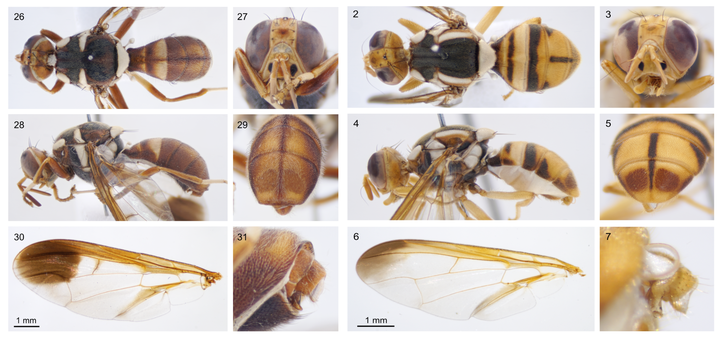The Dacini fruit fly fauna of Sulawesi fits Lydekker’s line but also supports Wallacea as a biogeographic region (Diptera, Tephritidae)
 Image credit: C Doorenweerd
Image credit: C DoorenweerdAbstract
Although there is scientific consensus on most of the major biogeographic regions in the world, the demarcation of the area connecting Southeast Asia with Australia and Oceania remains debated. Two candidate boundaries potentially explain faunistic diversity patterns in the regions: Lydekker’s and Wallace’s lines. The islands in between both ‘lines’ are jointly termed Wallacea, with Sulawesi as the largest landmass. We surveyed Dacini fruit flies (Tephritidae: Dacinae) in Sulawesi between 2016 and 2019 using traps baited with male lures, resulting in 4,517 collected flies. We identified all specimens to species level, which adds 15 new species records to the island, bringing the total number of Dacini species in Sulawesi to 83. The biogeographic affinity of species in the updated checklist reveals a strong connection with former ‘Sunda’ (41% of species); validating Lydekker’s line, but also a high level of endemism (47% of species), confirming the uniqueness of Wallacea as a biogeographic region. We further describe a new species, Bactrocera (Bactrocera) niogreta Doorenweerd, sp. nov. and discuss the taxonomy of several interesting species.